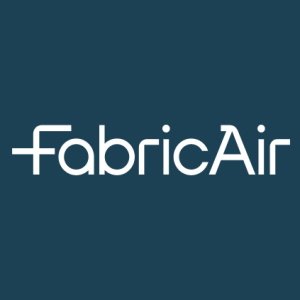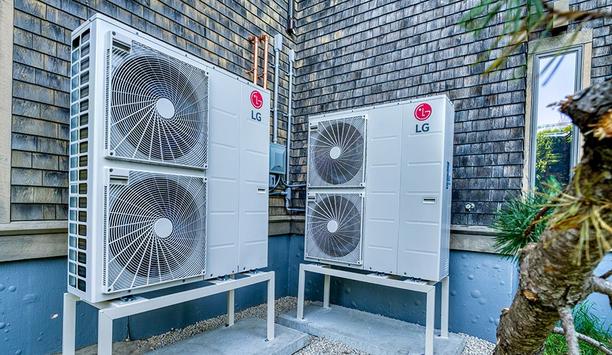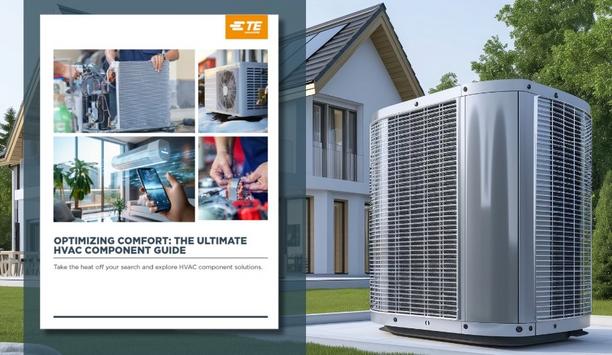FabricAir - Experts & Thought Leaders
Latest FabricAir news & announcements
FabricAir, a globally renowned fabric-based air distribution solutions manufacturer, will showcase its products in a tradeshow - China Refrigeration Exhibition (CRH) 2022. In 2022, the exhibition will be hosted at Chongqing International Expo Center, in Chongqing, China. The China Refrigeration Exhibition 2022 will take place from August 1 to August 3, 2022, and FabricAir’s representatives will display and present the latest innovations and products of fabric-air-based air depression technology, and the newest additions to the product portfolio, at the event. FabricAir’s solutions at China Refrigeration Exhibition 2022 It will be the first time that FabricAir will showcase its products in Southwest China In addition, it will be the first time that FabricAir will showcase its products in Southwest China, therefore, it will be a great opportunity to meet existing and potential client in a live setting. Their experts will look forward to meet everyone at FabricAir’s booth no N4F59, where they will be ready to show all their fabric duct solutions and how they can improve Indoor Air Quality (IAQ) in their facilities. China Refrigeration Exhibition There will also be a showcase of a market-specific product, such as insulated ducts, in addition to the company's other innovative and global solutions at China Refrigeration Exhibition 2022. The China Refrigeration Exhibition is one of the largest professional exhibitions around the world in the HVAC industry. It was certified by two international authoritative institutions, UFI and FCS. It has formed a multi-disciplinary platform with exhibition and display as it main functions, based on high-end forums and the internet.
Like most North American cannabis industry grow-ops, Real Leaf Solutions (RLS), based in Kalkaska, Michigan, USA, is still refining its growing methods, but the two-year-old company may have finally found a state-of-the-art HVAC design that will help it reach optimum yields shortly. HVAC retrofit Tom Beller, RLS’ Co-Owner and Chief Operations Officer (COO), believes his latest HVAC retrofit for two 1,500-square flowering rooms is a major step toward optimum harvest goals. It consists of a fabric duct supplied by six and eight-ton variable refrigerant flow (VRF) systems; a combination he’ll use when doubling the operation this year from 12,000 to 24,000 square feet. Beller’s confidence is backed by last harvest’s 20-percent yield improvement, which he attributes partially to the new HVAC design. design team and challenges Prior RLS HVAC challenges revolved around getting airflow to the plants and their soilless peat/coca mix Beller’s HVAC retrofit design team was headed by mechanical contractor, Marc Burnette, president, Superior Heating and Cooling (SHC), Traverse City, Michigan; Brad Bonnville, Regional Sales Manager at fabric duct manufacturer - FabricAir, Lawrenceville, Georgia; the Fujitsu VRF team at Johnstone Supply, Traverse City; and Jeromy LaRock, outside sales West Michigan at manufacturer’s representative, Major Lozuaway, Grand Blanc, Michigan. Prior RLS HVAC challenges revolved around getting airflow to the plants and their soilless peat/coca mix at the right velocity, uniformity, temperature, and relative humidity (RH). uniform air distribution The fabric duct solution incorporates a linear orifice array at the 4 and 8 o’clock positions on each 20-inch-diameter. The Combi 70 fabric also disperses approximately 12 percent of the airflow through the duct’s permeable surface to prevent condensation. The factory-engineered permeability and linear dispersion result in a uniform 2,500-CFM air distribution per duct run that helps plants thrive. heat pump condensers Burnette set up each room to provide dehumidification and heating from any of the four evaporators Meanwhile, each flowering room’s four ceiling-hung V-II Airstage Fujitsu evaporator units supplied by two outdoor heat pump condensers can maintain Beller’s preferred 77°F and 56-percent RH within a tight ±1 tolerance. SHC’s Burnette set up each room to provide cooling/dehumidification and heating from any of the four evaporators simultaneously if needed. VRF benefits The design is invaluable when latent and sensible heat load shifts during light/dark room cycles create environmental changes unsurmountable by conventional HVAC air handling equipment. Beller said the VRF stabilizes and pinpoints temperature/RH settings without adding portable dehumidification or humidification equipment that other grow-ops depend on. Finding the Best HVAC Combination When opened in February 2019 as one of the first recreational and medical marijuana grow-ops certified and licensed by Michigan’s Marijuana Regulatory Agency (MRA), RLS struggled to maintain optimum growing conditions resulting in yields “we knew could be improved upon,” according to Beller. The all-metal building’s flowering rooms were supplied with conventional DX split systems. The ceiling-hung air handlers’ metal spiral ductwork with registers every 10 feet created drafts, hot spots, and air stratification that affected yields. enhanced air comfort The new HVAC environment not only raises yields, but the enhanced air comfort is also increasing staff productivity The new HVAC environment, however, not only raises yields, but the enhanced air comfort is also increasing staff productivity. “It (the flowering room with the fabric duct/VRF system) is a different environment; you get a very strange sensation when entering compared to the other rooms,” said Tyler Pickard, RLS’s Lead Cultivator, who upon entering the first time immediately gathered his cultivation team to experience the air comfort difference. energy costs savings RSL will save energy costs as well, because fabric ducts’ more uniform air distribution was proven more efficient than metal duct/register systems, according to a study conducted by the Iowa State University Mechanical Engineering Department. Improved air dispersion leads to narrow temperature room gradients, decreased HVAC run-times, and up to 24 percent less energy consumption versus metal ducts, according to the study. antimicrobial fabric duct Using antimicrobial fabric duct is an advantage for us because Michigan’s MRA has the strictest standards" Furthermore, the metal duct is prone to condensation formation in humid environments. Metal duct’s galvanization process contains toxic silver oxides that drip into the soil with condensation, get absorbed by the plants, and ultimately infiltrate the cannabis user. State governments regularly check for heavy metals and can mandate a failed cannabis harvest’s destruction. “Using antimicrobial fabric duct is an advantage for us because Michigan’s MRA has the strictest heavy metal and mold test standards in the U.S.,” said Beller. Maintaining Sanitary Environments RLS cleans every flowering room after harvesting. Disassembling and commercially laundering the fabric duct, which requires less than a half-day for one employee, is also part of the disinfection process even though the fabric is antimicrobial. “Cleaning metal duct is difficult in place, and taking them down would require the added costs of a contractor with the correct equipment,” said Beller, adding “Laundering the fabric duct just makes a more sterile environment.” disinfection efforts The ions disinfect and electrically attach to airborne contaminants thereby making them large enough for entrapment Other disinfection efforts include the air handlers’ 100-percent return air bipolar ionization modules manufactured by AtmosAir Solutions, Fairfield, Conn., which floods the rooms with positive and negative charged ions. The ions disinfect and electrically attach to airborne contaminants thereby making them large enough for entrapment in the air handlers’ MERV-8 media filters. Ease of installation Fabric duct’s lighter weight and installation ease enabled SHC’s two-person crew to install five 35 to 38-foot-long duct run in less than three days and without heavy-duty lifting equipment or removing the facility’s dozens of 1,000-watt, double-ended, mixed spectrum, high-pressure sodium light fixtures. Each run is suspended on a PVC-coated metal cable hung two feet below the 14-foot-high ceilings. Metal duct would have required twice the time, a larger installation crew, and interfered with post-cleaning fast-track planting. RLS’s plans include doubling its space by spring 2021, installing more efficient lighting with variable spectrums, and retrofitting the current third and fourth flowering rooms with fabric duct and VRF.
FabricAir® Inc., Lawrenceville, Georgia, the original manufacturer of fabric HVAC duct, is celebrating its 45th anniversary campaign ‘45 Years of Proven Track Record’ this month in North America and throughout its 10 international subsidiaries. The first modern fabric duct was developed and installed in a slaughterhouse in 1974 by FabricAir’s precursor, Denmark-based IPS Dansk Presenning A/S, a company in the Eletrolux Group. The early fabric duct model designs successfully provided a safer environment for employees and more sanitary production lines by preventing condensation accumulation, corrosion and industrial hygienic challenges associated with food processing and conventional metal HVAC duct. Precision Spot Ventilation The research and development department developed innovations such as NozzFlow–plastic nozzles Retitled IPS Ventilation A/S as it spread across Europe in the 1980’s, new models were developed for applications beyond food processing. Soon IPS Ventilation A/S was the pioneer in fabric duct by the 1990’s. The 1990’s helped form the company’s leadership and product innovations that are still staples of ventilation today. Brian Refsgaard, FabricAir’s current CEO, joined the firm as a sales and business development manager. The research and development (R&D) department developed innovations such as NozzFlow–plastic nozzles for precision spot ventilation; Trevira–a cutting-edge permeable and washable fabric woven with flame-retardant materials; and a host of different vent designs to embrace most airflow challenges. Architectural Ceiling Ventilation Market FabricAir made its North American market penetration in 1989, which led the company beyond refrigeration and into many HVAC applications. Retail, office, education and other commercial uses were commonly specified by engineers seeking uniform air dispersion. ‘Make it better and make it easier’ was the motto driving new product developments after 2000 Meanwhile, contractors welcomed its installation labor reduction of up to 60 percent versus conventional round metal ducting in the booming open architectural ceiling ventilation market. ‘Make it better and make it easier’ was the motto driving new product developments after 2000, such as the All-In-One suspension system, a popular product with architects because it aesthetically keeps an inflated appearance whether the air handler is operating or not. Computational Fluid Dynamics After the world recession began in 2009, FabricAir gained an even larger foothold in the ventilation market as value engineering became important in new construction projects. Today, FabricAir is still innovating and expanding. It recently introduced its new R&D AirLab, a computational fluid dynamics (CFD) analysis service, and state-of-the-art enhancements to its laser-cutting technology. Its U.S. operation is one of 11 international subsidiaries that help make it a world leader in fabric air ducting. “We foresee FabricAir growing exponentially another 45 years and beyond, while also remaining a worldwide leader in fabric HVAC duct innovation,” said Brian Refsgaard, CEO, FabricAir.
Leveraging Radiant And Hydronics To Help Achieve Decarbonization Goals
DownloadSealed Connectors In Harsh Environments
DownloadPowering And Cooling Next Generation Data Centers
DownloadDebunking Myths To Promote A Bright Future For Heat Pumps
DownloadOptimizing Comfort: The Ultimate HVAC Component Guide
Download










